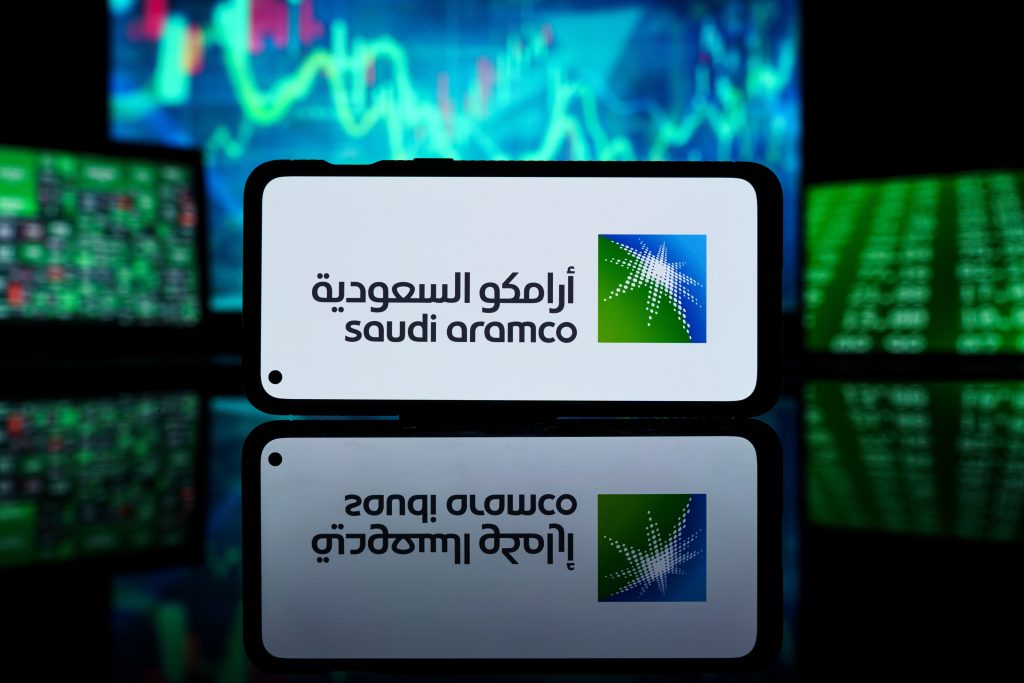The oil behemoth Saudi Aramco has made an announcement that its recent share sale was primarily purchased by international investors, generating a substantial $11.2 billion in the process. This secondary share offering is expected to significantly reinforce the financial standing of Saudi Arabia in the short term, as the kingdom embarks on the construction of ambitious developments, including lavish resorts and stadiums. These initiatives are integral to Saudi Arabia’s transformative Vision 2030 reform agenda, aimed at diversifying the economy beyond oil.
In a pre-market statement, Aramco revealed, The majority of the shares constituting the institutional tranche of the Offering was allocated to investors located outside of the Kingdom.
Following the announcement, Aramco’s stock closed at 28.60 Saudi riyals ($7.63) per share on the Saudi bourse, after an initial open at 27.95 riyals, which pegged the company’s market valuation at roughly $1.85 trillion.
Confidential sources indicated that international buyers were allotted approximately 58 percent of the shares, a stark increase from the 23 percent allocated during Aramco’s initial public offering in 2019, which set records as the largest IPO ever. The sources, who preferred to remain anonymous, disclosed that a substantial portion of the international orders originated from the European Union and the United States, with additional participation from investors in Japan, Hong Kong, and Australia.
The state-dominated jewel of the Saudi economy, Aramco, declared on May 30 that it would release 1.545 billion shares, equating to about 0.64 percent of its issued shares, on the Saudi stock exchange. This move was widely perceived as a litmus test for foreign investor interest as Saudi Arabia forges ahead with Vision 2030, which is epitomized by grandiose ‘giga-projects’ like NEOM, a proposed high-tech mega-city in the desert.
Aramco set the price of its secondary offering at 27.25 Saudi riyals per share on the preceding Friday, which was at the lower spectrum of the 26.70 to 29 Saudi riyals range announced at the end of May.
About 10 percent of the shares were offered to retail investors, drawing 1.3 million subscribers, Aramco said on Friday.
A source intimately familiar with the matter conveyed to AFP that the retail allocation was oversubscribed by 3.7 times and the combined demand from institutional and retail investors exceeded $65 billion. The whole deal would have been covered a number of times by international demand. It was a lot stronger at this stage than it was at the IPO,
the source added.
It appeared that this was the biggest secondary offering in the EMEA region since 2000, the largest equity capital market transaction globally since 2021, and the most substantial offering in the Middle East since Aramco’s own IPO, which ultimately raised $29.4 billion.
In addition to its base dividends, Aramco announced last year that it would introduce performance-based dividends. Just last month, the company reported base dividend payments of $20.3 billion for the first quarter, and a performance-linked dividend distribution of $10.8 billion to be paid in the subsequent quarter.
Experts are not surprised by the eagerness of eligible traders to acquire shares, especially in light of the consistent dividend payouts irrespective of the company’s profit margins, as noted by Ellen Wald, a senior fellow at the Atlantic Council and author of a history of Aramco.
As the dominant crude oil exporter globally, Saudi Arabia holds an approximate 81.5 percent stake in Aramco following the secondary sale. The Saudi sovereign wealth fund, the Public Investment Fund, and its subsidiaries, control about 16 percent of the company.
Aramco’s record profits in 2022, following the surge in oil prices due to Russia’s invasion of Ukraine, enabled Saudi Arabia to record its first budget surplus in nearly a decade. However, the company’s profits saw a 25 percent reduction last year owing to diminished oil prices and production cuts.
